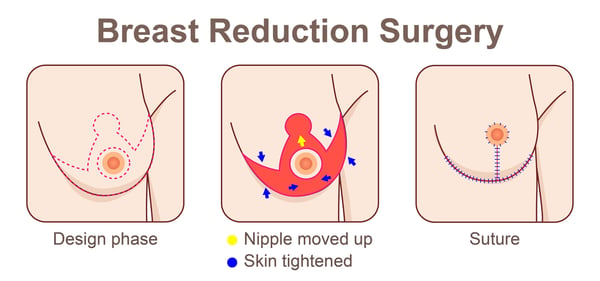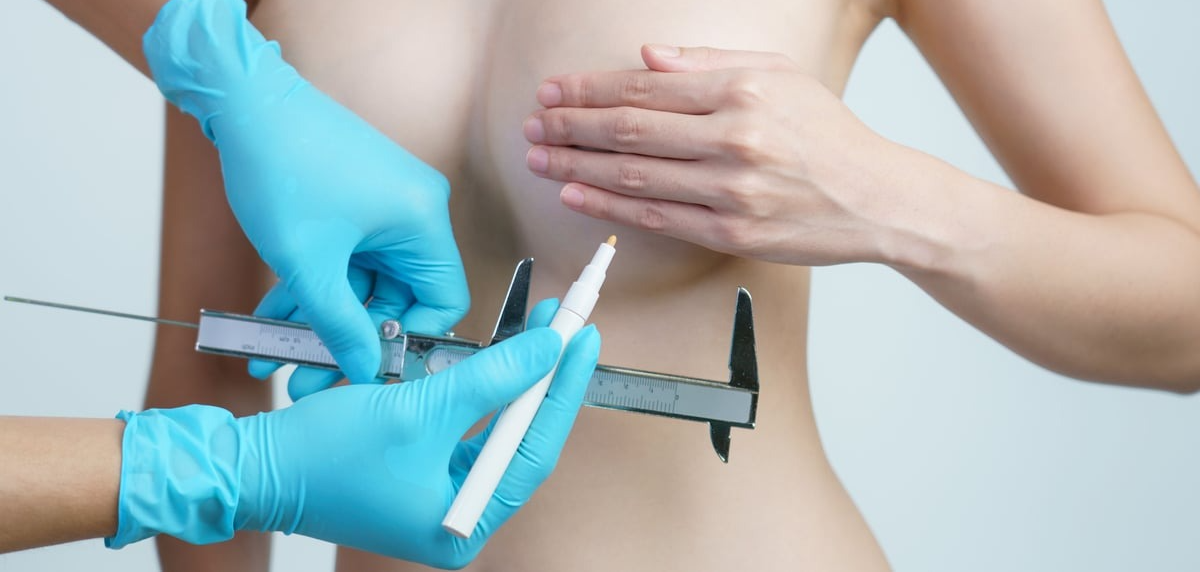Aesthetic Procedures: Breast Reduction
Breast Reduction Surgery in Singapore
Enlarged breasts can lead to multiple problems such as neck and back pain, bra strap grooving, arthritis, infections in the breast folds, interference with exercise, and social embarrassment. Breast reduction is usually done for individuals whose enlarged breasts are causing such issues.
How are breast reductions performed?
Post-procedurally, recovery and care are similar to mastopexy.

Breast Lift VS Breast Reduction
What to Expect Before, During, & After Breast Reduction Surgery
Before
Every breast reduction surgery is preceded by a consultation, where patients are assessed for their fitness and suitability for this procedure. The doctor will aim toalso understand the patient’s desired outcome (e.g. target bra cup size) and communicate whether this is feasible and advisable.
It is also important for the patient to follow the surgeon's pre-operative instructions from weeks prior to the day of surgery.
During
The surgery, performed under general anesthesia, typically takes a few hours, depending on the size of the reduction. During the procedure, excess breast tissue, fat, and skin is removed, the breast is usually reshaped, and the nipple and areola may be repositioned.
After
Patients may experience swelling, bruising, and heightened sensitivity in their breasts post-operation, and are usually recommended to wear a compression bra. The surgeon may also prescribe medication to lower pain and risk of infection. There will also be a list of post-operative instructions, such as dos and don’ts for certain diets, engaging in physical activities, and even attire.
Understanding the Risks of Breast Reduction Surgery
Like any other type of major surgery, breast reduction procedures come with the risks of bleeding, infection, and adverse reaction to the anaesthesia. Other complications and side effects include:
- Temporary bruising
- Scarring
- Numbness or changes in sensation in the nipples and areolae
- Breastfeeding difficulties
- Asymmetry of the breasts
The Polaris Approach
At Polaris Plastic & Reconstructive Surgery, we combine modern aesthetic procedures with complementary treatments to attain realistic, natural-looking and long-lasting outcomes. Our consultant plastic surgeons and medical directors exercise a “patient-first” approach that focuses on embracing individual uniqueness with highly customised treatment plans, and ensure a smooth and rapid recovery for patients by harnessing advanced plastic surgery techniques and technology.
FAQs
Can I get my breast reduction covered by insurance?
In Singapore, the criteria whereby insurance can reimburse for breast reduction is dependent on the weight of breast tissue removed. This would be more than 250grams per breast or more than 500grams in total. Severity of symptoms can be taken into consideration as well but usually on a case-by-case basis.
I am a male but notice that my breasts are enlarged. What can I do about this?
Abnormal enlargement of male breasts should be investigated, most importantly to exclude sinister causes such as male breast cancer (1% of all breast cancer). Usually, male breast enlargement is due to gynecomastia, which is a very treatable condition (see Gynecomastia).
PATIENT STORIES
Post Massive Weight Loss Body Contouring
A 40-year-old lady consulted with Dr Pek with the desire to correct large amounts of excess skin and soft tissue. She had undergone Bariatric Surgery (Sleeve Gastrectomy) 2 years prior to her presentation and had successfully lost almost 30kg of weight. With ... Read more
Treat Gynecomastia with Minimally Invasive Methods in Singapore
A 38-year-old male engineer presented to Dr Pek with symptomatic growth of his chest/breast area. Since puberty, he complained of unusually prominent chest tissue around his nipple and areolar region. This had worsened gradually over the years, with the left ... Read more
Upper eyelid lift and eyebags rejuvenation
63 years old Chinese female with hypertension and hyperlipidemia presented to Dr Pek with significant droopiness of her upper eyelids on both sides, affecting the upper portion of her visual field. She would constantly feel that her upper eyelids were heavy, ... Read more
Bilateral breast reconstruction using abdominal free flaps
A 45-year-old mother of 2 children was diagnosed with left breast cancer, for which a skin-sparing mastectomy (total removal of breast tissue leaving behind the skin envelope) was recommended. Read more
ARTICLES
TL;DR: A tummy tuck (abdominoplasty) goes beyond aesthetics ...
TL;DR: Lymphedema is long-term swelling caused by poor ...
Contact Form
1 Orchard Boulevard #10-08 Camden Medical Centre, Singapore 248649
6 Napier Rd, #08-01 Gleneagles Medical Center, Singapore 258499
Tel: +65 6737 4565 | Mobile: +65 8828 4565 | Email: clinic@polarisplasticsurgery.com | Business Hours: Mon - Fri: 9am - 6pm | Sat: 9am - 1pm | Sun/Ph: Closed













